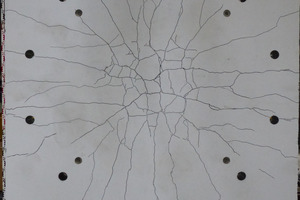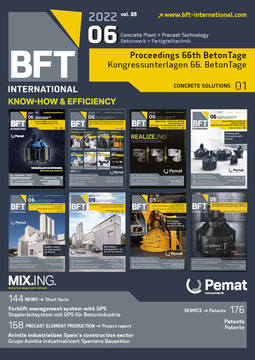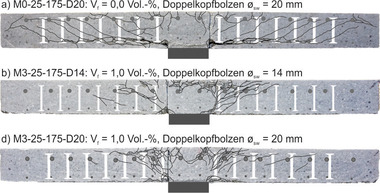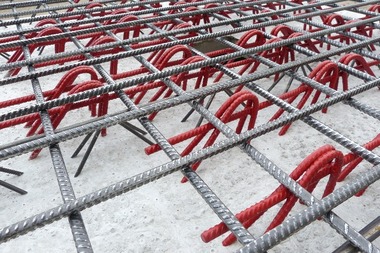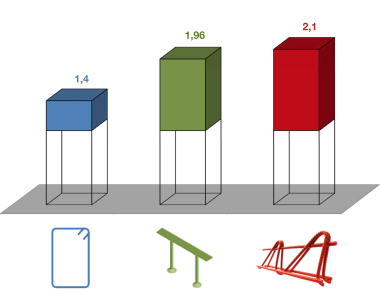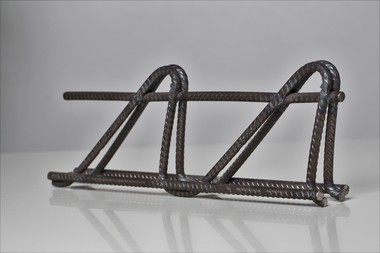Experimental investigations on punching shear
of flat slabs made of carbon-reinforced concrete
So far, European standards do not stipulate generally applicable verification rules for the punching shear of slabs made of carbon-reinforced concrete. In addition, regulations on the structural design of carbon-reinforced concrete slabs with or without shear reinforcement as well as the design of the so-called collapse reinforcement are subject of research as well. For the above reasons, the phenomenon of punching shear in carbon-reinforced concrete construction is of great practical relevance.
For the assessment of punching shear capacity and punching shear behavior in flat slabs made of carbon-reinforced concrete, three large-scale tests were conducted in the testing hall of the IMB of RWTH Aachen University in the course of a current research project as part of C³ (Carbon Concrete Composites). At a consistent concrete strength of the carbon-reinforced concrete slabs, apart from the slab thickness, the width of the support was also varied and thus the shear slenderness and the degree of longitudinal reinforcement of the slab. The slabs were manufactured under practice-related conditions in the precast plant of a project partner. The “Carbon4ReBAR” reinforcement bars of Thyssen-Krupp were used as tensile reinforcement of the slabs.
In case of the slab sections with centrically arranged support, the slabs respectively showed punching shear failures with the typical crack pattern in the tension zone of the slab (s. Fig.) as well as planar shear cracking which is visible in the saw-cuts.
On an international level experiments were already conducted on two-way prestressed flat slabs, with primarily using GFRP reinforcement, and hence the selected reinforcement consequently featured a substantially lower stiffness in comparison to common steel or carbon reinforcement. Therefore, the experiments carried out by the author supplement the existing databases in literature on punching shear by further experiments with slab thicknesses of 21 cm and 28 cm, respectively, which are comparable to usual slab thicknesses of a high-rise building.

